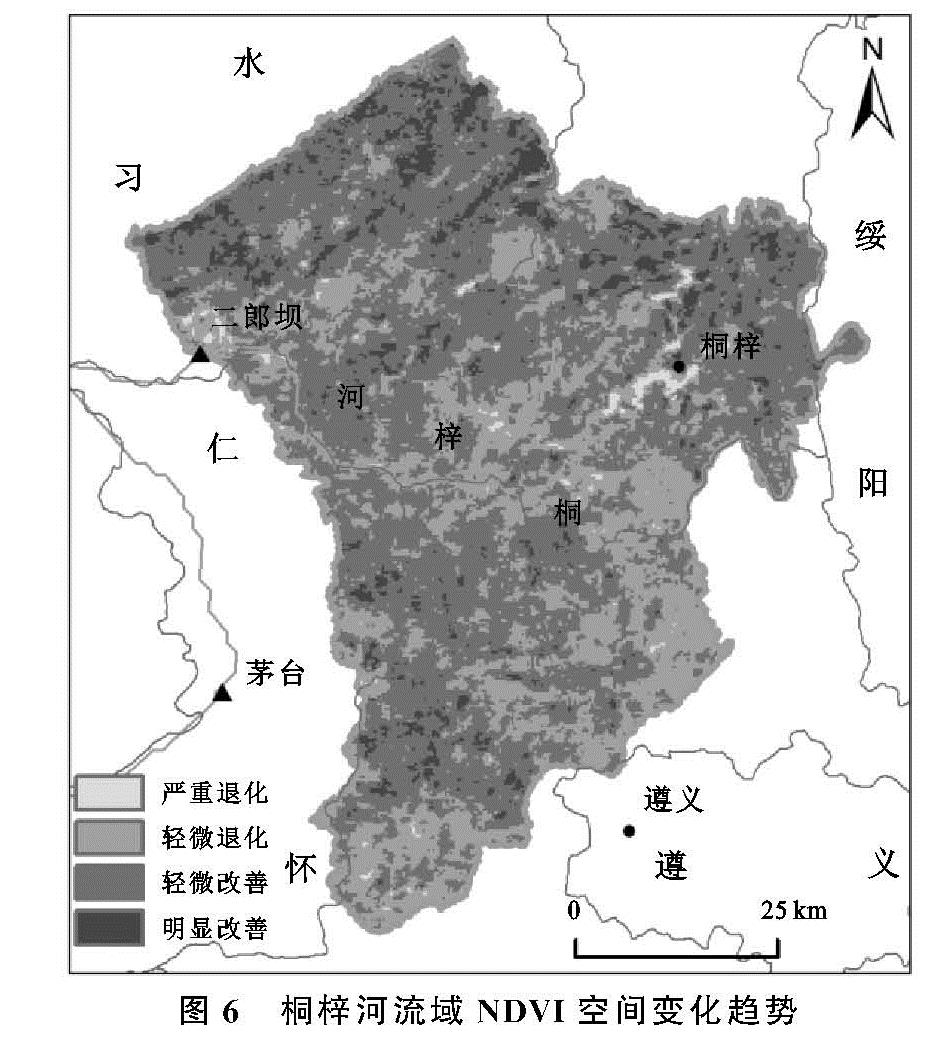喀斯特地区占地球陆地面积的7%~12%,为世界近25%的人口提供饮用水源[24]。由于特殊的地质条件,喀斯特地区表层土壤浅薄,入渗能力强,地形复杂,其水文过程与非喀斯特地区有很大差异,因此,喀斯特和非喀斯特地区的气候和人类活动对水文过程中的径流量影响也可能不同。黄河流域作为中国第二大河流,该流域属于典型的非喀斯特流域,径流量自20世纪70年代以来出现大幅度的衰减,有观点认为该流域的径流量在90年代早期或者中期发生突变,其中降水量的减少是该流域径流量减少的主要原因[25]。但是根据王随继等在黄河流域的研究结果显示,在忽略蒸散量的影响后,变异期降雨量和人类活动对皇甫川流域径流量减小的贡献率分别为36.43%和63.57%,在措施期分别为16.81%和83.19%[4]。在对黄河流域中游区间的相关研究中,王随继认为如果不考虑蒸散量的影响,降雨量、蒸发和人类活动对黄河中游区间产流量变化的贡献率在变异期分别为25.94%,-17.68%和74.06%,在措施期分别为25.13%,-18.54%和74.87%; 如果考虑蒸散量的影响,则人类活动对黄河中游区间产流量变化的贡献率在变异期和措施期分别增大到91.74%和93.41%[23]。导致这种原因一方面与拦蓄滞留改变流域的蒸散量从而使流域的径流量发生改变有关,另一方面则与该时期大规模的生态修复工程有关。
针对于中国南方流域而言,该区域既有喀斯特地区又有非喀斯特地区,不同区域径流量对气候变化和人类活动的响应和贡献率存在着显著的不均一性。有研究表明中国南方的珠江流域以气候变化影响为主,气候变化的影响值为92.0%,而长江流域和东南诸河则以人类活动影响为主,人类活动影响量分别为60.9%和84.8%[26]。这与本研究的研究结果保持一致,本文中的桐梓河流域属于赤水河流域(长江流域支流)最大的支流,同时也属于典型的喀斯特流域,本研究认为如果考虑蒸发量对桐梓河流域径流量的影响,则人类活动对桐梓河流域径流量变化的贡献率在TB时期会增加到86.83%。这与该流域位于亚热带喀斯特地区,表层土壤稀薄,且表层岩溶带发到,渗透率极高的特性有关[27],这种特征与非喀斯特地区显著不同,在喀斯特地区只有当土壤和碳酸盐岩裂缝和裂缝完全被水饱和时,才会发生地表径流。大多数降雨通过碳酸盐岩裂缝和裂缝输送到地下水系统,而少量则以地表径流形式输送。由于岩溶碳酸盐岩裂缝和裂缝具有较大的储存能力和较高的入渗率,土—表层岩溶系统在径流产生中起着重要作用,这与本研究中降水在1975—2015年下降不显著也可能有一定的关系,因此,这种特殊的土壤—表层岩溶构造是造成喀斯特和非喀斯特地区气候和人类活动对流域径流量影响的主要原因。
20世纪80 年代中国逐渐实施了西南喀斯特地区石漠化工程,包括“长防”和“长治”工程、“珠治”试点工程在内的一系列生态工程[28]。由于此类生态工程项目的大量实施,加强了地表坡面水土保护措施,实现了生态恢复,地表植被覆盖呈现出显著增加的趋势,根据MODIS13Q1植被NDVI的监测结果(图5和图6)可知,流域植被NDVI呈现出增加趋势,增加的速率为0.107/10 a,且在空间上增加的区域所占的面积达到78.20%。石漠化工程的实施减缓了区域的水土流失速率,使得流域径流量呈现出减少趋势,另外该流域近年来通过坡改梯、堤坝建设、植林种草、引水灌溉等各种形式拦蓄滞留了地表大量径流量,而且随着人口不断增加和经济的快速发展,城市生活、工矿企业等对用水量的需求量也日益渐增,径流耗水量大大增加。另外,由于桐梓河流域的天门河水库、九盆水水库、火石水库以及高坎水库等中小型水库的修建致使流域径流量呈现出减少趋势。即人类活动对喀斯特流域径流量变化的影响主要是通过在喀斯特坡面的拦—蓄—引—用等形式拦截减小了坡面产流量,导致径流集流面积大大减小,河道汇流效率降低。相对于非喀斯特流域,喀斯特流域人类活动对径流量变化的影响作用相对较弱,因而贡献率稍有偏低,但却与非喀斯特流域呈现共同的增强趋势。
图5 桐梓河流域NDVI年际变化趋势及其阶段性特征







